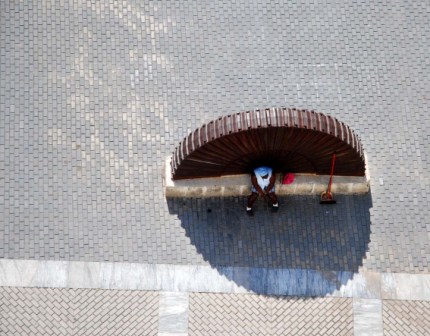After the Euphoria
Yusimi Rodriguez

HAVANA TIMES, Feb. 27 – A black and white photo from the early 1980s shows us a group of Cuban youths confident of a seemingly imminent future.
Though this is not the first image in the documentary “Costas extrañas” (Strange Coasts) —directed by Dayron Porrúa and Eider Armus and competing in the 9th Exhibit of New Film Producers— it was the first one that caught my attention.
This 38-minute documentary is divided into two parts: “Euforia” and “Ecos.”
In the first part, a local group of amateur visual and theatrical artists, writers and art instructors recall with nostalgia the peak of the 80s cultural and artistic life in the municipality Nuevitas, in the eastern province of Camagüey.
It’s not necessary to be from Nuevitas or even to be an artist to understand and share that nostalgia. The 80s is a theme of melancholic conversation in our country. Those who weren’t born yet sometimes listen to people speaking about those years and think they’re exaggerating, or they detect a tone of sadness for having lost something that will never return.
It was not only the economic conditions of that time, but the sense of building something that everyone believed in…that we were going somewhere.
In the film, local artists discuss their euphoria, their achievements. The painters are all amateurs, because there was not (nor are there now) professional painters in Nuevitas .
The director of the gallery recounts how that institution was always full of works by area artists. They once even had an important group of painters called Despegue. Likewise, local writers were advised by two important nationally recognized writers; and in the Provincial Encounter of Literary Workshops, the municipality used to monopolize almost all the awards.
In each factory existed a “cultural module” with all of the various artistic manifestations. These were assisted by instructors from the casa de cultura (cultural center). The existence of these modules was obligatory.
Though the fall of the socialist camp and the arrival of the Special Period affected artists in the municipality by making materials more difficult to obtain, the interviewees allow us to see that it wasn’t this that gradually caused the end of the cultural movement in Nuevitas, since they —especially the painters— sought out alternatives to confront the problem.
The second part, “Ecos” (Echoes), reveals the present devastation of cultural life in Nuevitas. The exhibition shows works mostly by artists from other municipalities and provinces, but only a small representation from the municipality, with these having been created by art instructors.
These teachers, according to an interviewee, have come to occupy the place of local artists, who no longer exist in the municipality. We also see the problems of this new generation of instructor-artists, their aspirations and the incomprehension of institutions and authorities.
The documentary ends with the photo that caught my attention at the beginning. It’s a reminder of that distant euphoria, of that future that seemed so close and so certain.





